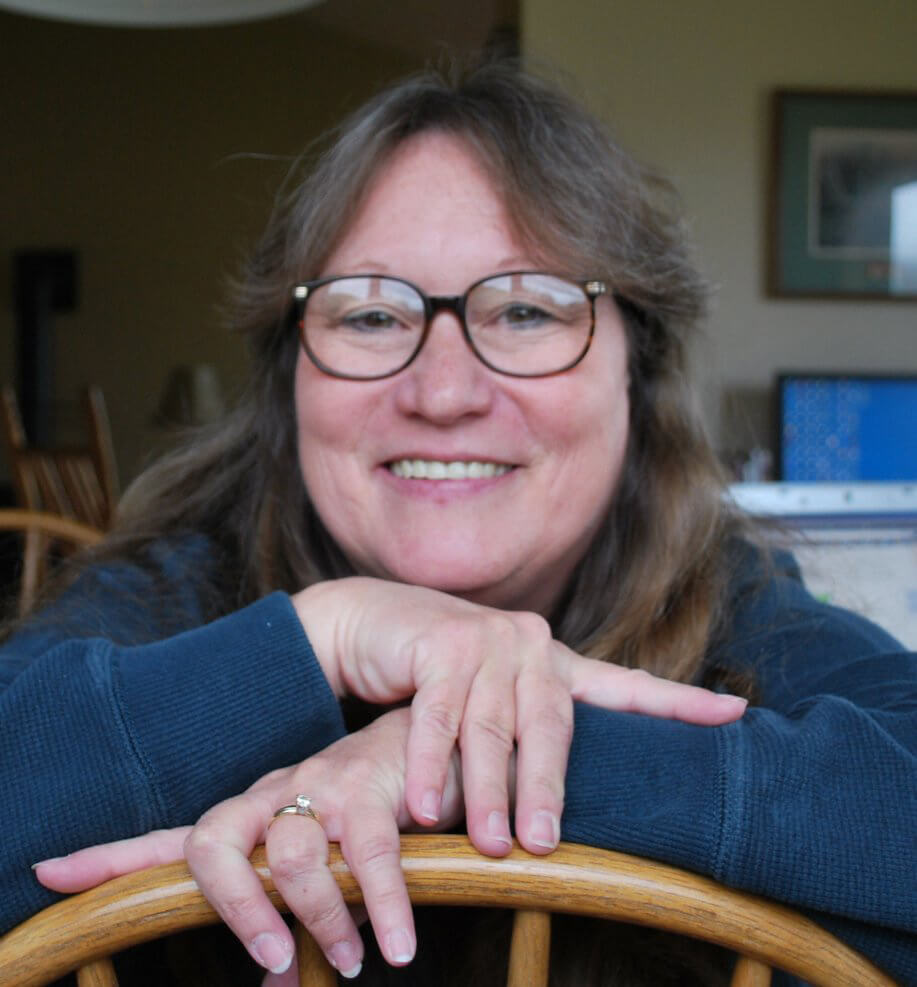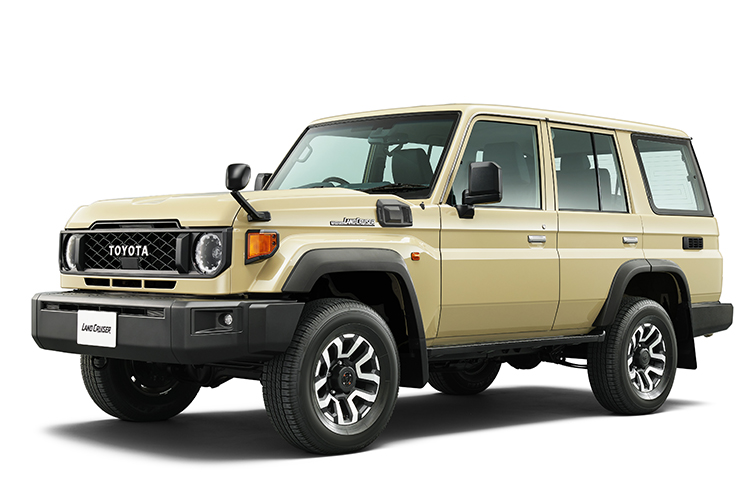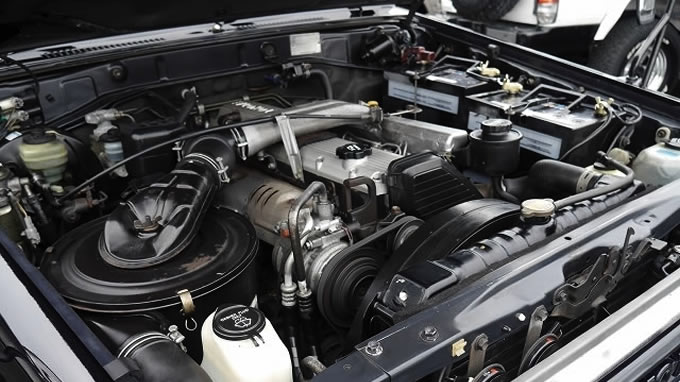Since the very first Land Cruiser came off the assembly line at Toyota Motors, the world has been transfixed by this sometimes iconic, but always reliable vehicle. From its humble beginnings as a copycat Jeep to its current status on the international stage, the Land Cruiser has dominated and conquered some of the most rugged terrain while making it indispensable for people who rely on being able to get to some of the most remote parts of the world.
The 70 Series is one more link in this chain of formidable 4WD vehicles.
The Origins of The 70 Series
In 1984, Toyota introduced the world to the heavy-duty van 70 Series, and a year later, they produced a light-duty wagon. This iteration was the next logical step up from the 40 Series and was built for the most demanding jobs in the world.
It ran parallel with the 60 Series station wagon and remained unchanged until 2007 when slight changes were made. The heavy-duty version has been so successful that Toyota left it alone for over 25 years.
History of the Land Cruiser 70 Series
With three body styles, the Land Cruiser 70 Series has been successful in capturing a large segment of the 4WD market from those who need hard-working indestructible vehicles, to those who need to get away for the weekend and get a bird’s eye view of the world from the top of a mountain.
1984: Birth of the 70 Series
The 70 Series lineup kept the tradition of the 40 Series alive as it took on the dirty jobs of farming, mining, backcountry exploration, and park service use. When Toyota saw a shift in the use of 4WD vehicles, they rose to the opportunity to change with the times. By the end of the 40 Series, Toyota could see that many people were searching for more recreational use than work from their vehicles, so they offered the LC70 as the next logical chapter in the Land Cruiser story.
People wanted to explore. They wanted to be able to see what was on the other side of the dense forest or what the world looked like from the top of a mountain ridge. The 70 Series was there to take them on their journey. The new LC70 stayed utilitarian with an easy-to-clean cabin, but it had a curved windshield, so people could see all around them, and there was a soft top option for lighter weight, which was great on the trails.
The short wheelbase models are the 70 and 71 models, 73 and 74 are medium wheelbase, and 75, 78, and 79 are long wheelbase models. The 76 and 77 models are station wagons. Not all of these models are still available as some were quite limited in production to start. FLEX Automotive has an article with more information on the Land Cruiser 71 and 76 that gives more information on these models.
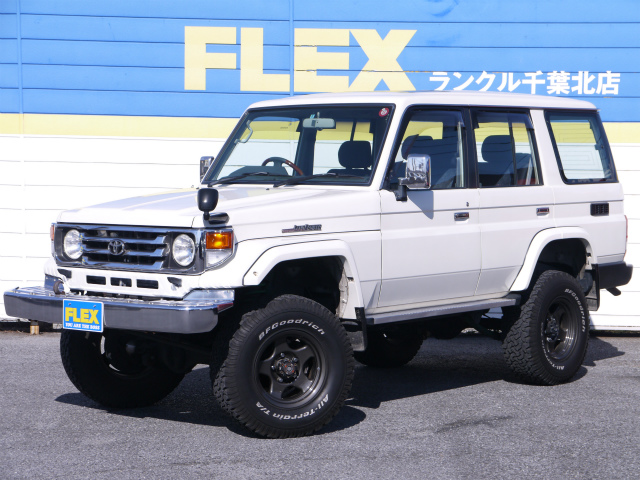
1999: Minor Changes
In 1999, Toyota replaced the leaf springs with coil springs along with radius rods and an anti-roll bar to meet consumers’ growing expectation that rides should be smooth and comfortable rather than reminiscent of the original BJ. To meet these needs, the 70 Series was equipped with longer semi-elliptic leaf springs in the rear and added power steering, which meant no more wrestling with the steering when cornering.
2004: Discontinued in Japan
2004 saw the end of the 70 Series in Japan; however, Toyota continued to produce the LC70 for the Australian market, as well as other places that relied on these sturdy vehicles. Traditionally, the 70 Series was very popular in regions dominated by sand and soft soil conditions like the Australian outback, the plains of Africa, and the sands of the UAE. Anywhere there are inhospitable driving conditions, the 70 Series seems to thrive on the challenge.
By 2004, the emission standards in Japan had changed, so Toyota dropped the vehicle from the Japanese market. The new regulations were not compatible with the design of the LC70 and its diesel engine.
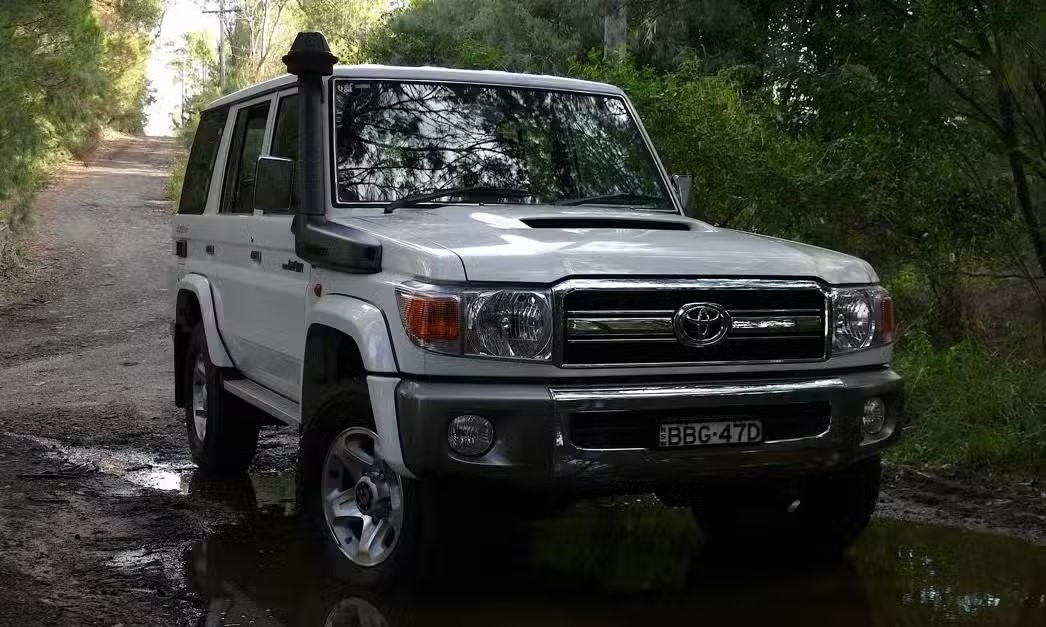
Photo by drive.com.au
2007: Architectural Change
In 2007, the LC70 was given a facelift that included the discontinuation of the traditional 40 Series independent fenders. This small change gave the 70 Series a completely different and more modern appearance.
With the introduction of the new 4.5 V8, the LC70 needed more room under the hood, so Toyota widened the front by 80MM / 3.4 inches and increased the engine room by 230MM / 9.01 inches. The result of the changes gave the LC70 a daunting and aggressive appearance. Since there were no changes from the A-pillar back, there was no increase in the cubic interior room.
This change was only for the Australian market since the 1VD-FTV 4.5L V8 was not available anywhere else in the world, and it was the only engine available in Australia. The African and other markets were using the straight-6 gas-powered engine, as well as the 1HZ diesel.

2014: 30th Anniversary Edition
In 2014, Toyota brought the LC70 back home to Japan for one year in the 30th anniversary model. In addition to the original configuration, the anniversary model offered a double cab pickup. It was equipped with the 1GR-FE V6 gas engine and came with a 5-speed manual transmission. It was on and off the market within a year, since it would not meet a new 2015 law in Japan that required all new cars to have skid control.
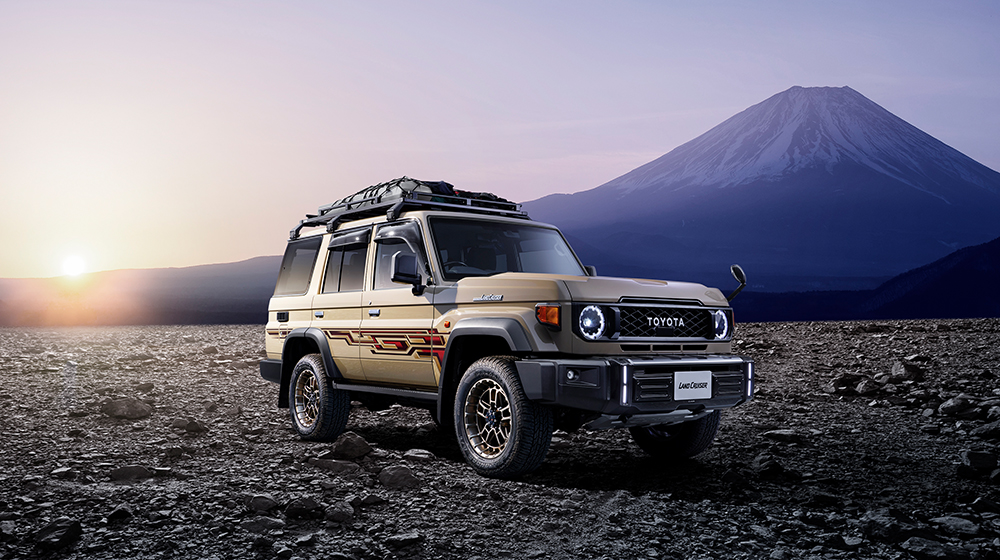
Photo by Toyota
2023: Revival in Japan
In 2023, Toyota announced a revival of the LC70 in Japan, which has excited the Japanese market who are fans of the 70 Series but haven’t been able to buy a new one in years. This newest Land Cruiser is equipped with an automatic transmission paired with a modified Hilux inline-4.
In addition to Japan, the new 70 Series will roll out to 170 countries around the world, with the biggest one being Australia followed by the UAE. This upgrade from the V8 diesel manual transmission models has made many people in Australia very happy since they were the people who worked closely with Toyota to develop this latest model.
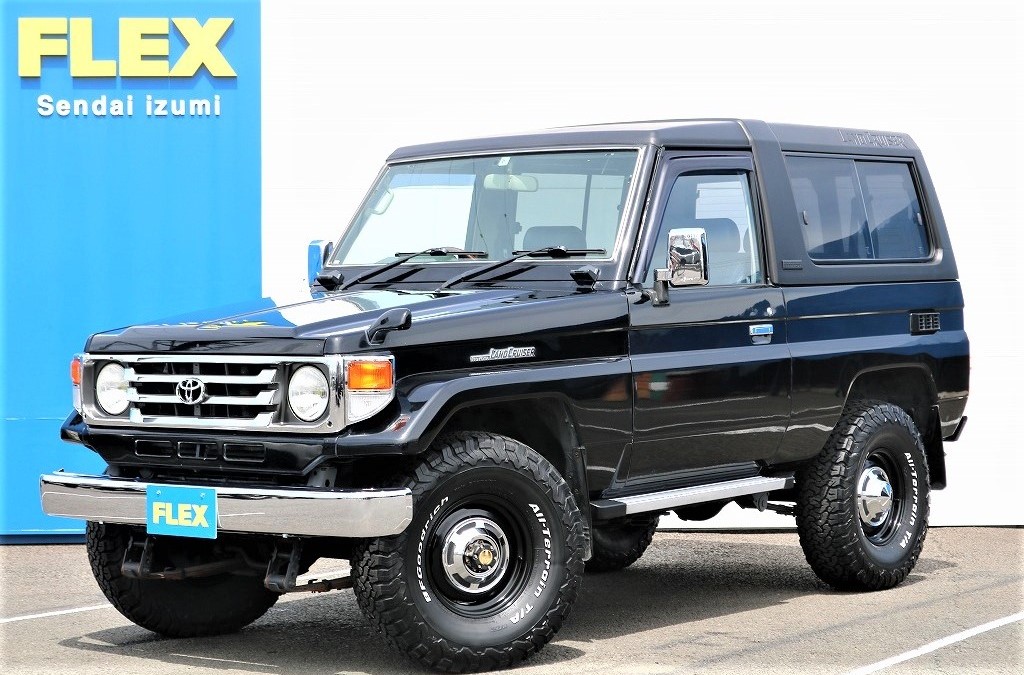
Generations of 70 Series Fans
The 70 Series has maintained a loyal fan base amongst its owners. From the outback to the cow pasture, this rugged, boxy, old-school 4WD delivers performance and reliability. While it may not be the most modern of all the off-road vehicles on the market, nor is it the most comfortable, the tradeoff is in knowing that you’ll get to your destination and home again without waiting on a tow truck.
The pros and cons are laid out here:
Pros
- Great for remote locations
- 4WD fans love it
- Powerful engine
- Off-road capabilities
- Straightforward maintenance
- Classic looks
Cons
- Lacks modern comfort
- Lacks current safety features
- Impractical on the roadways
- Poor fuel efficiency
Its history of reliability goes back to its heritage as a member of the Land Cruiser family. Toyota is known for its engineering excellence and quality manufacturing. The Land Cruiser has been proven on some of the toughest and most remote spots in the world and came through with flying colors.
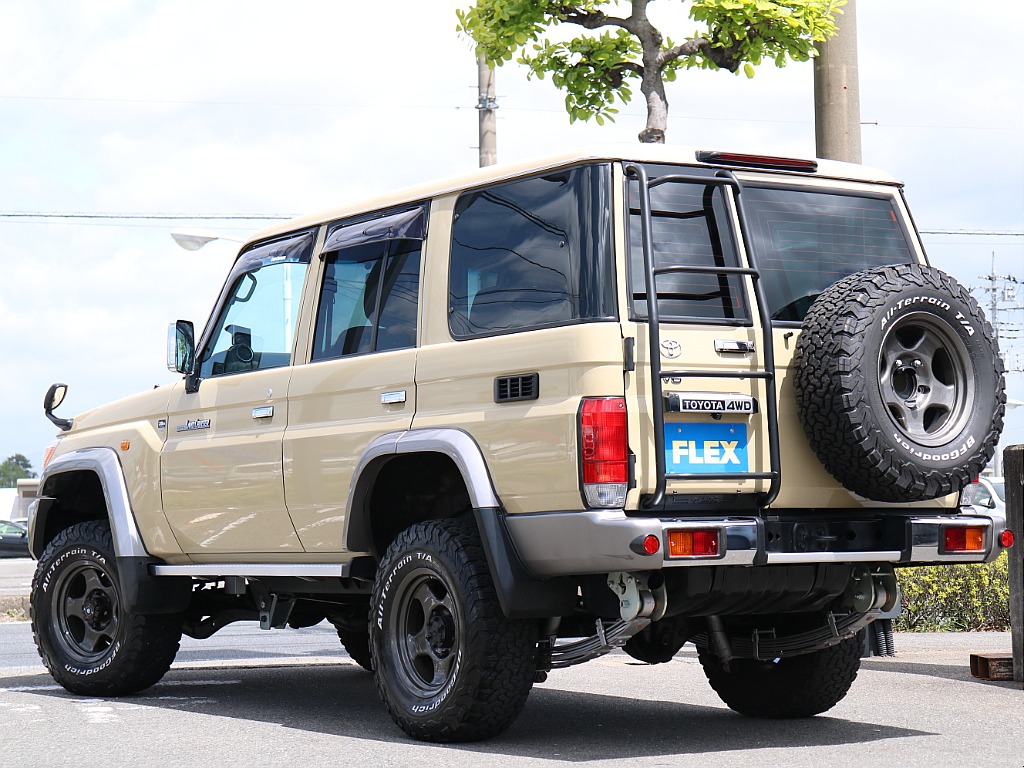
Rough Road Drivability
It doesn’t seem to matter who you ask about the drivability of the Land Cruiser 70 Series, you’ll get people who hate the way it drives on the streets and highways but wouldn’t want to be without it on rough roads. This opinion is across the board and about any year model.
Since Toyota didn’t make any changes to the 70 Series that significantly impacted its performance, it should have the same reviews regardless of the year. It’s built for work and deep dives into the brush, and that requires a sturdy frame and superb engine performance.
High Durability
Since the LC70 has fewer parts to fail, it has a high degree of reliability. All of the people who depend on the Land Cruiser 70 Series can vouch for its durability under the harshest conditions.
Simple is good when it comes to solid axles, control arms, bump stops, ball joints, bushings, and shocks. The Land Cruiser in general has a solid reputation of being able to clock over 300,000 miles and keep on going.
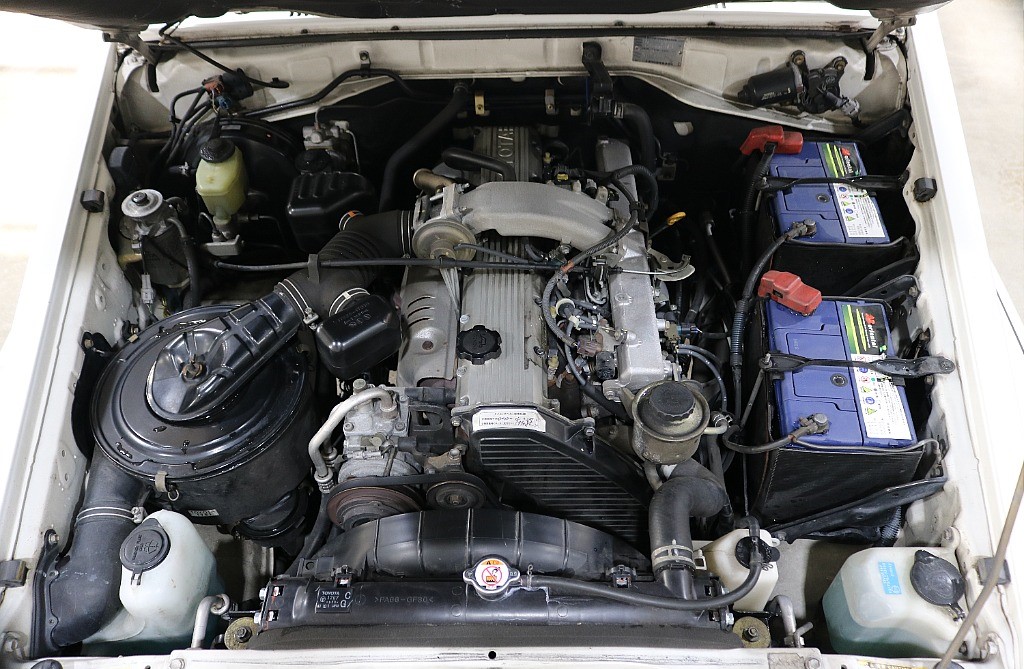
Proven Diesel Engine
A lot of its durability can be traced back to the nearly bulletproof 4.2 diesel V8 under the hood. While it is phenomenal at steadily powering the LC deeper into the brush and the muck, some people found it unresponsive. Many LC70 owners are not fans of the VD, but since this engine keeps going, they can’t complain about its trustworthiness.
Body Design
The body design hasn’t changed much over the years when it comes to the model lineup. Until 2007, it hadn’t had a change to the body in 23 years. Even that change was so minor that it might not have happened at all.
With the 1985 light-duty wagon, the styling changed when it morphed into the Prado in 1990, making it more of an SUV passenger vehicle rather than the commercial-oriented HD. The Prado has a much nicer ride and is more family-oriented than the standard 70 Series.
Land Cruiser 70 Series Market Trends
Market trends for the Land Cruiser 70 Series are interesting. This model is touted as a wise investment since it has unmatched resale value due to its reputation as an off-road warrior. Both Kelley Blue Book and the Automotive Lease Guide give the 70 Series high marks in retaining a high residual value. This means resale values are holding steady, making this vehicle a wise investment.
Top Speed magazine states that no matter what the changing markets bring, the only vehicle that is capable of doing the job of the Land Cruiser 70 Series is the Land Cruiser 70 Series. While it may not have the latest technology, it has the beating heart of the Land Cruiser reputation, and you can’t put a price on that. Of course, high residual values help put a price on it. As long as people are looking to escape to the top of a hill, the LC70 has a place in their garage.

Photo by Toyota
When Will the New Land Cruiser 70 Series Reach Dealerships?
If you’re waiting for the new LC70 to be delivered to a showroom near you, you might be waiting quite a while. The latest models will not be available in North America or Europe since the newest models still don’t meet the emission standards of these countries. However, in Japan and Australia, they are slowly stocking dealerships after a two-year backlog for the V8. Toyota Australian anticipates the orders to start flowing again by mid-2024.
The backlogs are due in part to the international shutdown and supply disruption from the pandemic. The other half of that equation is the new LC70 is eagerly awaited by a group of fans who haven’t seen a new model since 2007.
When considering a Land Cruiser 70 Series, you may wish to look into importing a 1990s version. Due to regulations in the U.S. that prohibit the import of vehicles that don’t meet the emission standards, vehicles that are over 25 years old are exempt from those laws. If you would like more information on importing or have Land Cruiser 70 Series questions, the staff at FLEX Automotive can answer your questions. They are the largest Land Cruiser dealership in Japan, and their U.S. dealership can help you join the off-road movement in a Land Cruiser of your own. Contact us now for more information.


